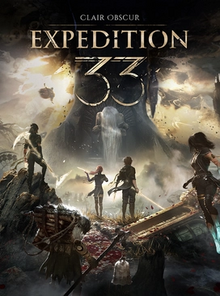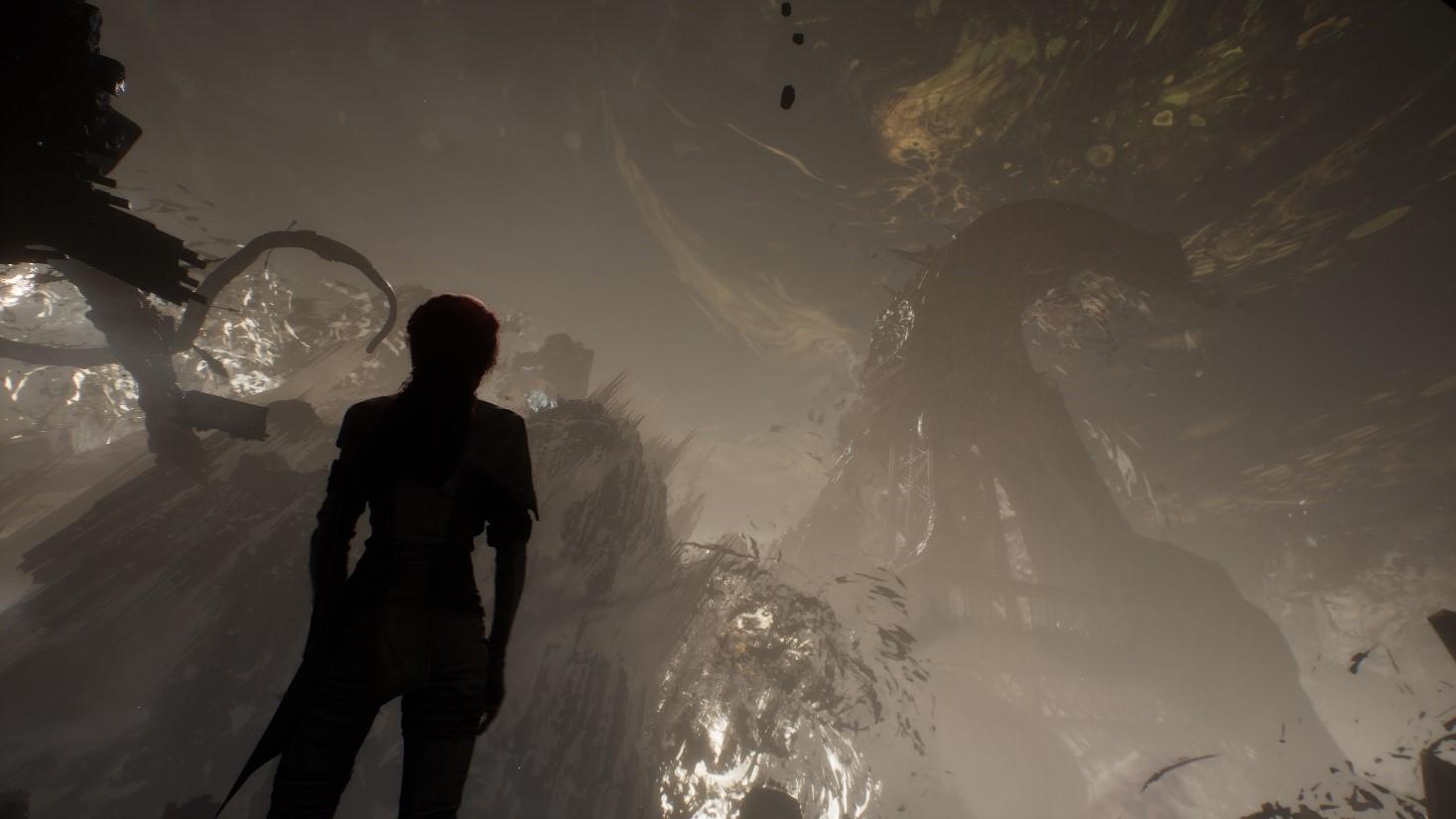Existing User Log In
New User Registration
Register for a free account to gain full access to the VGChartz Network and join our thriving community.





America - Front


America - Back

Reviewer's Note: This review contains major spoilers, but they will all be clearly marked as such below.
If there’s one thing that has increasingly made me lose interest in any game in recent years it's when I feel a lack of ambition in what the developers were trying to create; when they settle for making just another X genre game with perhaps a minor twist or the next numbered sequel in a series that has stagnated. What Sandfall Interactive has done with Clair Obscur: Expedition 33 is the exact opposite of that; the small team aimed for the stars as an independent start-up studio – and shockingly just about hit the mark.
Clair Obscur doesn’t shy away from burrowing from highly acclaimed titles of yesteryear – Persona, Dark Souls, and stray elements from a few others. On paper the result could have been chaos, or a game that cobbles together elements from other titles while lacking originality of its own, but somehow it instead manages to combine their strengths and to do so without ever feeling derivate or losing its own identity. It utilizes its French roots as an advantage, combining them with dark fantasy to create a setting that feels entirely fresh within the world of games, and combined with its other strengths I can honestly say it stands tall as the strongest original video game world in many years.
Starting with the obvious, the back of Clair Obscur’s physical box proclaims you can “discover a hauntingly beautiful world” and rarely has a promotional bulletpoint spoken so true; it's one of the most visually stunning games yet to be produced, where every other frame is screenshot worthy. It both excels in graphical fidelity and oozes style, from its unique monster designs, to its beautifully choreographed attacks, and most importantly the world itself, which makes for a gorgeous and varied backdrop as you traverse it little by little.
Accompanying this beautiful world is an almost equally impressive soundtrack, with a mix of soothing piano pieces and grand orchestral tracks that add to the weight of boss fights and major story points. All in all, the game is a marvel on the aesthetic side, and that's made all the more impressive by its status as a debut title from a relatively small team.
Diving more deeply into the combat, this is perhaps where Clair Obscur impressed me the most, outdoing my expectations and then some. It uses traditional turn-based combat, but with real-time elements added so that you can increase the effectiveness of your moves or dodge the opponents' attacks with well-timed inputs. This in itself is not revolutionary - it’s a staple of the Mario RPG series, to give just one example - but the ingenious move by Sandfall was to combine it with unpredictable move patterns and grandiose attacks inspired by Dark Souls, and then turn that dial up even further by having you dodge or parry your way through extended deadly combos. When you succeed it's extremely satisfying, and your own moves are by no means any less satisfying. Each character has unique mechanics, each weapon unique abilities, and finding ways to combine those already formidable abilities to become even more lethal is highly rewarding.
This holds no less true for the rest of the game's customization, as you can also choose between various “pictos” you find to unlock passive abilities and stats, and once a picto is mastered you can potentially equip it on any character, though only so many can be chosen at a time. The balancing between them is perhaps not perfect, but there’s also a certain satisfaction in unlocking a new picto and feeling like it’s absolutely busted. And that's exactly what makes Clair Obscur’s combat shine beyond just its clever design – the fact that it hits a sweet spot where both you and the enemies you face can feel absurdly powerful without contradicting each other. On the highest difficulty at least, the game provides challenge aplenty, especially to those who go seeking it in the form of optional “chromatic” enemies. When you first face down one of these it can often feel way out of your league, but if you master its move patterns and get the battle going a bit you can turn the tables and shave down its hit points by executing absolutely massive moves.
In fact, the only downside to the combat is perhaps that enemy health seemingly doesn’t scale with difficulty, at least not in a notable way. This usually works out fine for boss fights, but means standard battles can semi-regularly be finished before the enemies get their first turn - if you catch them off guard. However, when the attacks are this satisfying and the game isn’t lacking in other challenges, it’s hard to view that as too big of an issue.
You’d think we’d be running out of sky high praise at this point, but moving on to the game's narrative there’s still a sizeable portion of it left to dole out. Clair Obscur is no less ambitious with its story than its other elements, painting us a tale of a desperate struggle in a world where people face certain death when they reach a specific age - and that number is decreasing every year. At that same time, every year those remaining send out an expedition to reach the Paintress - the one who is painting these decreasing numbers - and kill her, in order to stop the cycle before it's too late.
As one could imagine, Clair Obscur certainly doesn’t shy away from being dark and hard-hitting with its storytelling. This is further enriched by cinematography worthy of French cinema, but most importantly it also has a cast of greatly compelling characters that make the story matter. They feel more real than most fictional characters, as we interact with them, joke with them, and learn of their lives and worries, and every major character feels interesting in one way or another even outside of the playable party. It all adds up to a greater puzzle, as the game unfolds and twists play out, and for the vast majority of the time its tale is as masterfully executed as every other part of the game. But…
MAJOR STORY SPOILERS BELOW.
SERIOUSLY, DO NOT READ THIS BEFORE YOU PLAY THE GAME.
As close as this review came to being purely a bed of rose petals, one major issue plagues the title, namely that the nuance it shows multiple times throughout the narrative is so sorely lacking in the conclusion.
In the end, when the final boss stands defeated, the game presents you with a morally grey choice, only there’s no balance in the outcome. The two main characters stand on opposing sides: Verso’s choice is unambiguously presented as the right one, while the epilogue to Maelle’s choice is quite literally depicted as a shot from a horror movie. It’s an exact mirroring of the indie game OneShot, which presents you with an almost identical choice, only in that game saving the world at the cost of the protagonist being able to go home is (more subtly) presented as the right choice, whereas in this title letting everyone die is what earns you the developer's approval. And that's despite the fact that the only thing keeping Maelle prisoner in this game is her own free will. That’s not to dismiss the arguments to be made for either choice, but the problem is the developers essentially did exactly that.
Another problem is Verso’s motivation. He forms “unbreakable bonds” with the other characters, promises Maelle that he'll help bring everybody back, and talks to Sciel about the people he would wish to see again, then performs a 180 in the final hour and not only chooses to sacrifice the whole world (again), but does so with shockingly little hesitance (really not a guy you want in your friend circle). If you choose Maelle’s option, he goes from being a troubled man who can still joke around with friends, to being suicidal and deeply bitter in no time flat. And the strongest reason he could have for this change, namely in finding out that the real Verso is tired of painting and seemingly wants to be set free, is one that he doesn’t even mention in his argument with Maelle.
Ultimately, no matter which choice you make, there’s no getting around the fact that the ending of Clair Obscur is a depressing one, even if one of them is depicted as being much more negative than the other. That would maybe have worked if it had been a purely dark game or something near to it, but that just isn't the case. Clair Obscur has humor aplenty, and a general theme of overcoming the odds, and that can’t help but feel a bit betrayed when you find out the ending of the game boils down to Tragedy A or Tragedy B. And the ending didn’t have to be all that different to avoid this problem. If it had presented the positives that each epilogue contains, the two different kinds of reunions, and more subtly hinted at the negatives (in Verso’s choice, a hint of sadness in Alicia’s eyes; in Maelle’s choice, depicting Verso as troubled but content, instead of full-on miserable, and hint at the potential cost instead of beating it into us with a sledgehammer), it could have been a balanced, bittersweet choice, rather than a tragic one-sided one, and this would have been much more in-line with the game’s overall tone.
MAJOR STORY SPOILERS END.
Clair Obscur: Expedition 33 brings to life a dark yet colorful fantasy world, with amazing gameplay, meaningful relationships, and a general sense of wonder in one of the decade’s finest games, then paints it bleak with its final unsatisfying stroke. That’s not a fun conclusion to have to draw after being so deeply invested in the title - I badly wanted it to be the incredibly rare 10/10 game that it almost managed to be. Instead, it lands itself as an(other) almost masterpiece; one that feels absolutely incroyable while playing it, but left me with mixed feelings afterwards – and not in the way the developers intended.









